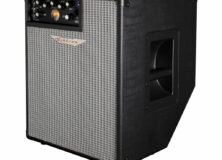
Read Time 2 Minutes
Writing Chord Progressions
If you know your basic “CAGED” major chords and minor chords, and can switch quickly and easily between them, you’re ready to start writing your own chord progressions—which is the way that many guitarists begin writing their own original songs.
Below you’ll find two simple steps for the skeleton of your first tune:
- Writing a chord progression using open major chords
- Writing a chord progression using open minor chords
Turn off your phone, grab your guitar, and give me twenty or thirty minutes of your time. By the end of that, you’ll have taken your first few steps as a songwriter—and who knows where that could lead?
Let’s go.
1. Your First “A” Section
Bear in mind that you are absolutely free to experiment with no rules whatsoever during your free time, but I ask you to humor me and give these restrictions a try just this once.
- You may only use these five chords: C, G, Am, Em, and D.
- Start and end the chord progression with G.
- Feel free to repeat any of the chords you choose any number of times during the progression.
Write down the sequence of chords in a notebook to make sure that you remember which order you put them in. If at some point while writing the chord progression you find that a certain chord sounds weird or wrong to you, try substituting another until you find transitions that you like. Trust your intuition here—you’re not as much a novice as you think; years of simply listening to music has already shaped your ear. Later on, as you study music in more depth, you’ll form a better and better understanding of why you like some sounds but not others.
When you’ve written a chord progression that meets all the guidelines given above, move on to the next step:
2. Your First “B” Section.
- Restrict yourself to the chords C, G, Am, Em, and D.
- The chord progression can be any length, and doesn’t have to use all of those chords above.
- Start and end this new progression with Em.
Write down whatever you come up with on the same sheet of paper. Go ahead and write it—we’ll be here when you get back.
Now that you’ve written two chord progressions, try this: play your “A” chord progression twice all the way through. Then, without pausing, switch to your “B” section chord progression. Play that twice.
Now repeat the whole thing over again. A, B, A, B. If you like what you hear, great! If you feel like tinkering, go right ahead. Experiment with different chord combinations; they come in dozens of different flavors.
Experiment with strumming these chords with different rhythms—playing along to a drum track can make your chords really come to life. In case you don’t have access to a drum machine, Garageband, or—best of all—a live drummer, you can find some perfectly serviceable drum loops online. I’m fond of the free Monkey Machine, myself.
If you haven’t done so already, leave this page open, turn off your phone, disconnect from the internet, and follow the process above. It’ll only take a few minutes of your time, and it’s a small price to pay (free!) for taking your first steps as a songwriter.





